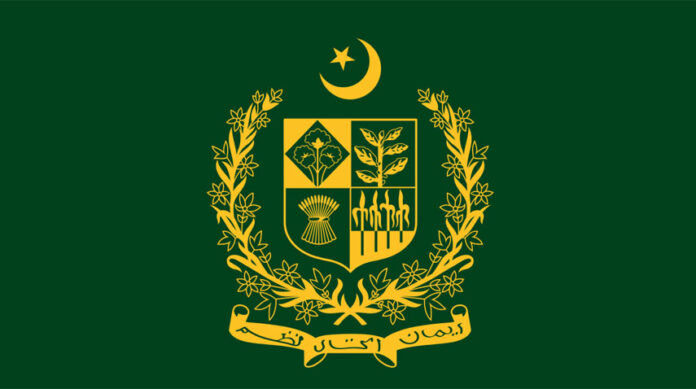
As we move from 2024 to 2025, it is important to have a look at the performance of Pakistan’s federal government in 2024. This blog aims to provide a comprehensive analysis of the government’s multifaceted performance, shedding light on what succeeded, what didn’t, and what lies ahead.
In 2024, the federal government focused on addressing economic instability, political polarization, and various social challenges.
- Economic PerformanceIn 2024, economic stability and growth were the government’s primary goals. They focused on fiscal consolidation and negotiations with the International Monetary Fund (IMF). The government implemented strict measures to reduce subsidies, enhance revenue generation to address budget deficits, and secure foreign loans. However, inflation continued to rise, peaking at 20% in some months.
- Industrial and Agricultural Sectors
The government made efforts to uplift the agricultural sector through the introduction of agricultural technology and subsidies on fertilizers and seeds. The industrial sector saw moderate growth due to incentives for export-oriented industries and Special Economic Zones (SEZs).
- Public Debt and Deficit
Public debt remained a pressing issue as the debt-to-GDP ratio exceeded 80%. Efforts were made to broaden the tax base, but while tax collection increased marginally, it fell short of targets.
- Economic Performance – Facts and Findings Based on Surveys and Reports
- Gross Domestic Product (GDP): According to Pakistan Bureau of Statistics, the economy experienced modest growth, with the GDP increasing by 0.92% in the first quarter of fiscal year 2024-25, driven by positive growth in agriculture (1.15%) and services (1.43%), despite a contraction in industry (-1.03%).
- Inflation: Reuters reports that the inflation rates showed a downward trend, with the annual consumer price inflation rate decreasing to 9.6% in August 2024, the first single-digit rate in nearly three years.
- Federal Budget 2024-25: According to media reports, the budget presented on June 12, 2024, the budget had a total outlay of Rs18.877 trillion, with total revenues estimated at Rs17,815 billion and expenditures at Rs18,900 billion, resulting in a fiscal deficit of 6.9% of GDP.
- Taxation: To address fiscal challenges, the government proposed new taxes aimed at raising an additional Rs2,000 billion, including an 18% General Sales Tax (GST) on various sectors.
- IMF Program: As per Country Today’s (a credible Pakistani news website) report Pakistan entered its 24th program with the International Monetary Fund (IMF), securing a loan of $7 billion. This program included measures such as higher taxes on farm incomes and increased electricity prices, aiming to stabilize the economy.
- KSE-100 Index: The Finance Division Pakistan’s report indicated the Karachi Stock Exchange’s KSE-100 index saw significant growth, increasing by 82.8% from 41,453 at the end of June 2023 to 75,878 at the end of May 2024, reflecting investor confidence amid economic reforms
- Foreign Policy and Diplomacy
In 2024, Pakistan’s foreign policy focused on strengthening ties with regional powers and international organizations. The country deepened its strategic partnerships with China and Gulf nations, primarily through the China-Pakistan Economic Corridor (CPEC). Diplomatic efforts were also directed towards improving trade relations and attracting foreign direct investment (FDI) from Western nations.
Pakistan’s Diplomatic Relations – Findings Based on Surveys and Reports
- Relations with the United States:In March 2024, President Joe Biden ensured Washington’s support to Pakistan in addressing the global and regional challenges. This marked the first official correspondence after several years between a U.S. president and a Pakistani prime minister. As per Country Today’s report, the tension between America and Pakistan resurfaced when the U.S. imposed sanctions on four Pakistani entities, including the National Development Complex, and accusing them of developing ballistic missile technology. However, Pakistan rejected all the allegations and asserted that its nuclear program is solely for self-defense against the Indian aggression.
- Relations with India: According to Reuters, in July 2024, Indian Prime Minister Narendra Modi accused Pakistan of using “terrorism” and “proxy wars.” However, official responses from Pakistan to Modi’s accusations may not have been issued yet.
- Relations with Afghanistan: According to a Country Today’s report, the tensions escalated between Pakistan and Afghanistan when Pakistan’s armed forces conducted intelligence-based cross-border operations against terrorist havens in Afghanistan. Pakistan accused the Afghan Taliban of supporting banned Tehrik-i-Taliban Pakistan (TTP) and letting them use Afghan soil. However, Taliban’s spokesperson, Zabihullah Mujahid termed airstrikes as “clear aggression,” and confirmed that Taliban government would not leave such actions unaddressed. He also asserted that Afghanistan’s territorial sovereignty was the red line for the ruling Islamic Emirate.
- Relations with Iran: In January 2024, Pak-Iran relations disturbed when Iran staged cross-border strikes in Pakistan, prompting retaliatory actions from Pakistan.
- Public Sector Development
In 2024, the Public Sector Development Programme (PSDP) played a vital role in supporting economic growth, infrastructure, and social development. The government allocated Rs1.4 trillion for infrastructure and social development projects, an increase of almost 47% compared to the previous year.
Governance and Transparency
The government faced allegations of corruption and inefficiency. Despite these challenges, it introduced reforms such as digitalizing government services and promoting e-governance, though progress remained limited.
Political Instability and Dialogue
Political polarization intensified in 2024, particularly between the government and opposition parties. Despite calls for national dialogue, political gridlock continued, hampering legislative progress on critical issues such as electoral reforms and constitutional amendments.
Impact of Political Instability – Facts and Findings Based on Surveys and Reports
- Government Expenditures: The Times of India reported that over 18 months, the government spent approximately PKR 2.7 billion managing PTI’s protests and sit-ins. In the last six months alone, PKR 1.2 billion was spent controlling intensified demonstrations in Punjab, Khyber Pakhtunkhwa (KP), and Islamabad.
- Daily Economic Losses: Morningstar reported that protests and related shutdowns caused daily economic losses exceeding PKR 190 billion, leading to cumulative damages exceeding PKR 3 trillion. This severely impacted critical sectors such as retail, hospitality, and logistics, with revenue declines of over 50% in protest-affected regions.
- Social Development and Welfare
- Health and Education: In the fiscal budget of 2024-2025, the federal government increased its budgetary allocations for healthcare services and education programs. Initiatives such as free medical camps and school infrastructure projects were launched.
- Poverty Alleviation and Social Safety Nets: Social safety nets were expanded under programs like Ehsaas and Benazir Income Support Program (BISP).
Health and Education: Budgetary Allocations – Facts and Findings
- Healthcare: In the 2024-2025 budget, approximately PKR 1.2 trillion was allocated to the health sector, marking a 15% increase from the previous year. Despite this, healthcare spending remains low, at just 2.7% of GDP, compared to the global average of 6.3%.
- Education: The 2024-2025 budget allocated PKR 1.4 trillion to education, a 12% increase from the previous year. However, this allocation is still only 2.5% of GDP, well below the UNESCO-recommended level of 4-6%. Approximately 40% of schools in Pakistan lack basic facilities like electricity, toilets, or drinking water.
Conclusion
In 2024, Pakistan’s federal government passed through a multifaceted landscape of economic challenges, political instability, and diplomatic tensions, while struggling to achieve growth and stability. The government made significant efforts to address economic instability through fiscal reforms, negotiations with the IMF, and initiatives to boost key sectors like agriculture and industry. However, challenges such as inflation, a rising debt burden, and mixed results in tax collection continue to pose hurdles for the economy.
Politically, 2024 was marked by polarization and gridlock, hampering progress on critical reforms. At the same time, Pakistan’s foreign relations remained dynamic, with strengthened ties to China and Gulf countries, but tensions with U.S. and neighboring countries such as India, Afghanistan, and Iran also continued, highlighting the complexities of regional diplomacy.
On the social front, despite positive steps toward poverty alleviation and social welfare, the challenges of resource allocation and infrastructural deficits remain significant.
Looking ahead to 2025, Pakistan faces an opportunity to build on the trials of 2024, learning from its successes and setbacks. A more unified political environment is required to tackle ongoing economic issues and social issues. As Pakistan continues its journey toward stability and prosperity, the coming year will be pivotal in determining whether the reforms and initiatives of 2024 will lead to lasting change.
About Author: Dr. Khadeeja Imran is the Executive Editor of Country Today, holds a PhD in Hydro-politics, and is a prominent political analyst of Pakistan. She can be reached at [email protected].





